Samsung Announces the Galaxy S 6 and S 6 Edge
by Joshua Ho on March 1, 2015 12:30 PM EST- Posted in
- Smartphones
- Samsung
- Mobile
- SoCs
- Galaxy S6
- Exynos 7420
- Galaxy S6 Edge
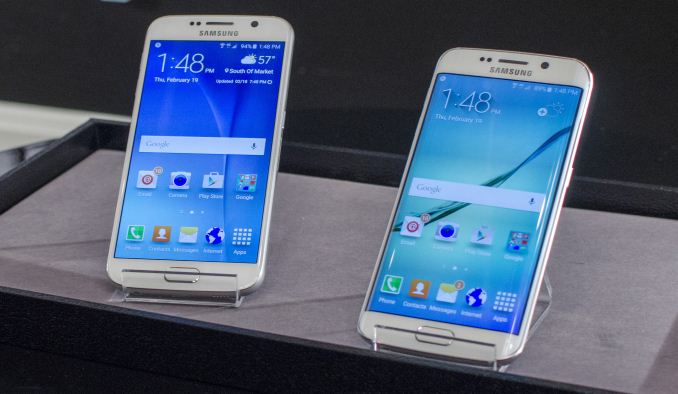
In recent times, Samsung has seen the erosion of their dominance in the Android ecosystem. The reasons for why this is are many, but at least some of the criticism has been focused on the products themselves. At the high end, many criticisms have been leveled at the industrial and material design of Galaxy S and Note devices, and outside of the hardware itself, TouchWiz has received a great deal of criticism for performance issues and poor design. This brings us to the Galaxy S 6 and S 6 edge, which represents a fundamental shift in the way Samsung approaches the way their phones are made and designed. While we’ve seen these changes in the form of the Galaxy A line and the Galaxy Note 4, the Galaxy S6 represents the first phone that has been made from the ground up with a focus on industrial and material design.
This focus on design is immediately apparent as the Galaxy S 6 is the first Galaxy S phone with a unibody design. There are no visible seams or screws, and there is no apparent gap between the glass back and the metal frame of the phone. In person, the design of the Galaxy S 6 is really quite shocking when compared to the Galaxy S 5 or any previous Galaxy S device. It seems that there has been a great deal of thought and care put into each aspect of the device. The metal frame is far from a simple curve, and is somewhat rounded along the top and bottom, but flattens out along the sides for better grip. The edges of the frame are slightly chamfered as well, in order to make edge swipes off of the display smooth and natural. The display is centered on the device, with symmetrical top and bottom bezels, and thin side bezels. The back cover is clean, with a glass back that has little in the way of distractions outside of the camera, LED flash module, and a Samsung logo. Overall, the Galaxy S6 has been a massive departure from everything else that has come before it.
While the design is one aspect of the Galaxy S 6, the specs are another. While it’s often popular to repeat that specs don’t matter, they represent the foundation for the entire user experience. To start, we’ve placed the usual spec sheet below to get the basics down.
| Samsung Galaxy S5 | Samsung Galaxy S6 | Samsung Galaxy S6 Edge | |
| SoC | MSM8974ACv3 2.45 GHz Snapdragon 801 | Exynos 7420 2.1/1.5GHz A57/A53 | Exynos 7420 2.1/1.5GHz A57/A53 |
| RAM/NAND | 2GB LPDDR3 16/32GB NAND + microSD |
3GB LPDDR4-1552 32/64/128GB NAND |
3GB LPDDR4-1552 32/64/128GB NAND |
| Display | 5.1” 1080p SAMOLED HD | 5.1” 1440p SAMOLED | 5.1” 1440p SAMOLED, Dual Edge |
| Network | 2G / 3G / 4G LTE (Qualcomm MDM9x25 UE Category 4 LTE) | 2G / 3G / 4G LTE (Category 6 LTE) | 2G / 3G / 4G LTE (Category 6 LTE) |
| Dimensions | 142 x 72.5 x 8.1 mm, 145 grams | 143.4 x 70.5 x 6.8mm max, 138 grams | 142.1 x 70.1 x 7.0mm max, 132 grams |
| Camera | 16MP (5132 x 2988) Rear Facing with 1.12 µm pixels, 1/2.6" CMOS size, 31 mm (35mm effective), f/2.2 2MP Front Facing |
16MP (5132 x 2988) Rear Facing w/ OIS, f/1.9, object tracking AF 5MP Front Facing, f/1.9 |
16MP (5132 x 2988) Rear Facing w/ OIS, f/1.9, object tracking AF 5MP Front Facing, f/1.9 |
| Battery | 2800 mAh (10.78 Whr) | 2550 mAh (9.81 Whr) | 2600 mAh (10.01 Whr) |
| OS | Android 4.4 w/TouchWiz | Android 5 (64-bit) w/TouchWiz | Android 5 (64-bit) w/TouchWiz |
| Connectivity | 802.11a/b/g/n/ac 2x2 + BT 4.0, USB3.0, GPS/GNSS, MHL, DLNA, NFC | 2x2 802.11a/b/g/n/ac + BT 4.1, USB2.0, GPS/GNSS, NFC | 2x2 802.11a/b/g/n/ac + BT 4.1, USB2.0, GPS/GNSS, NFC |
| Wireless Charging | N/A | WPC 1.1 (4.6W) & PMA 1.0 (4.2W) | WPC 1.1 (4.6W) & PMA 1.0 (4.2W) |
| Fingerprint Sensor | Swipe | Touch | Touch |
| SIM Size | MicroSIM | NanoSIM | NanoSIM |
As one can see, there are a few key highlights of note in the Galaxy S 6. The Exynos 7420 SoC is the first SoC to be built on Samsung’s 14nm FinFET process. While this isn’t comparable to Intel’s 14nm process due to the use of a 20nm metal interconnect, there are some density improvements in areas that aren’t gated by interconnect pitch. While transistors are an area where we can see significant improvements to clock speed and power consumption, the metal interconnects can influence performance as well due to power dissipated by resistance in the interconnects, in addition to limitations on clock speed due to RC delay. This means that Intel continues to hold a significant process lead, as reducing interconnect pitch is exponentially more difficult past the 20nm node as resistance and capacitance issues increase dramatically. On the GPU side of things for example, the voltage drop is huge, showing an average of -200mV up to -300mV decrease at the 700MHz state. Overall, this move to 14nm should dramatically reduce power consumption as the effect of leakage is nearly eliminated.
Outside of process node, the Exynos 7420 is a rather standard big.LITTLE SoC, with four Cortex A57s at 2.1 GHz and four Cortex A53s at 1.5 GHz. However, the Exynos 7420 represents the first Exynos SoC to have full AArch64 support in software, unlike the Exynos 5433. The GPU is upgraded to a Mali T760MP8 solution running at up to 772MHz as the top frequency and 700MHz as the secondary maximum state, a huge improvement as the voltages top out at 825mV. We should be seeing very impressive battery efficiency improvements due to the 14nm process. The SoC supports LPDRR4 running at 1552MHz, and Samsung has equipped the Galaxy S6 with a UFS 2.0 storage solution. It remains to be seen whether this is a major point of differentiation this year, but in practice it seems that the Galaxy S 6 was smooth. Areas like the multitasking interface were noticeably faster to open and close, but there were still some scenarios where I saw some slight frame drops which is likely due to the pre-release software.
Another major area of focus for Samsung for the S6 was refining the camera. While the sensor remains the same Sony sensor that we saw in the Galaxy Note 4, Samsung has improved the optics to have a maximum aperture size of f/1.9 compared to the f/2.2 that we saw with the Galaxy S5 in addition to an IR sensor in order to improve white balance detection. OIS is also introduced to the Galaxy S lineup for this generation, and in practice the stabilization is as effective as the Galaxy Note 4. Samsung strongly prioritized shooting speed and general camera speed with this generation, as they introduced object tracking AF, a double tap camera gesture, and further refinement of the PDAF system in order to make the camera experience much better than before. The object tracking AF is similar to what we've seen on phones like the Huawei Ascend Mate 7 before, but double-tapping the home button to wake up the camera was almost instant compared to pretty much any other method I've seen before. The long start-up time that I saw with the Galaxy S5's camera application has also disappeared for the most part, and in general places like the gallery and camera application are much faster than before. The front-facing camera is also a 5MP camera, which represents an upgrade over the Galaxy Note 4 but shares a f/1.9 aperture. Unfortunately, I was unable to really test the camera at all but it should be at reasonable improvement over the Galaxy Note 4's camera.
For the S6 Samsung has also improved on the AMOLED display, both in quality and pixel density/resolution. Although we have relatively little detail on this, Samsung claims 600 nit luminance, up from their claimed 500 nits from the Galaxy S5 which means that this isn't the same panel as what we saw in the GS5 LTE-A. In addition, Samsung has included wireless charging support for both WPC1.1 and PMA 1.0 standards built into every Galaxy S6. The new fingerprint sensor is also amazing in comparison the experience with the Galaxy S5, and works about as well as Apple's TouchID system. Samsung is bundling this with Samsung Pay, which allows for payments with the fingerprint sensor for authentication and while not available at launch, Samsung will also support legacy magstripe terminals for mobile payments on the Galaxy S6. Samsung has also improved the speaker dramatically from the Galaxy S5, and it should have significantly improved sound quality and volume, in addition to the improved placement on the bottom of the phone. TouchWiz seems to remain relatively similar in design, but there's a big reduction in the number of pre-installed applications. There are some applications preinstalled by Microsoft such as OneNote, OneDrive, and Skype, but in general there's almost no bloat to speak of.
Overall, the Galaxy S6 seems to be quite promising. Although the design seems to be somewhat inspired by other devices on the market, the industrial and material design is a massive step forward from everything else we've seen from Samsung before. In general, it seems that Samsung has managed to put together a device that can truly compete with devices like the One M9 and iPhone 6 in every aspect, although it'll take a full review to really get a good idea for how it shapes up against the competition. The Samsung Galaxy S6 and S6 edge will be available globally starting April 10th with 32, 64, and 128 GB storage SKUs. The Galaxy S6 and S6 edge will both have white, black, and gold colors available, but the blue color will be limited to the Galaxy S6 and the emerald green will be limited to the Galaxy S6 Edge.


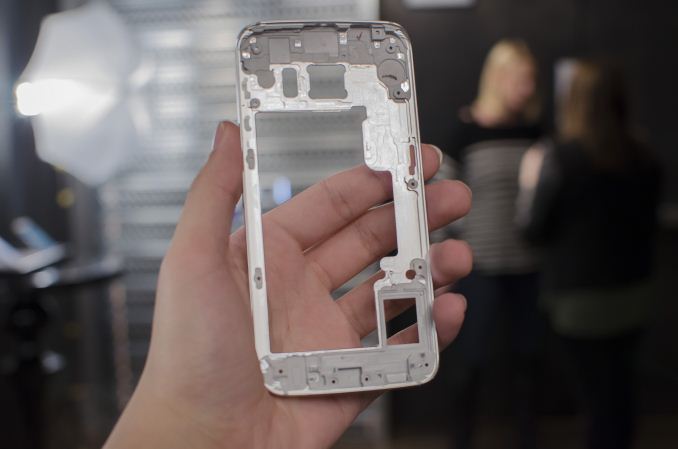


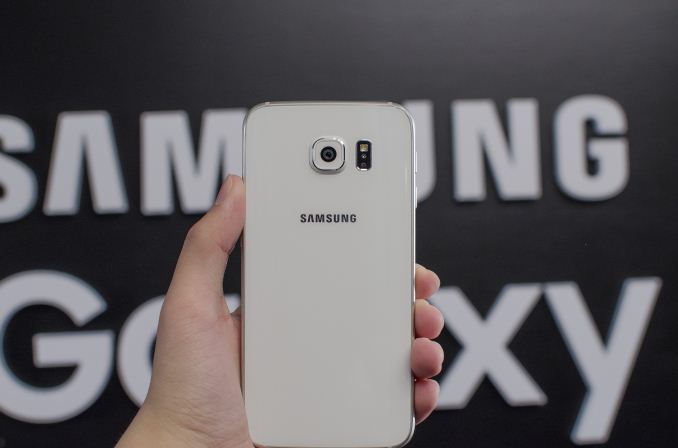
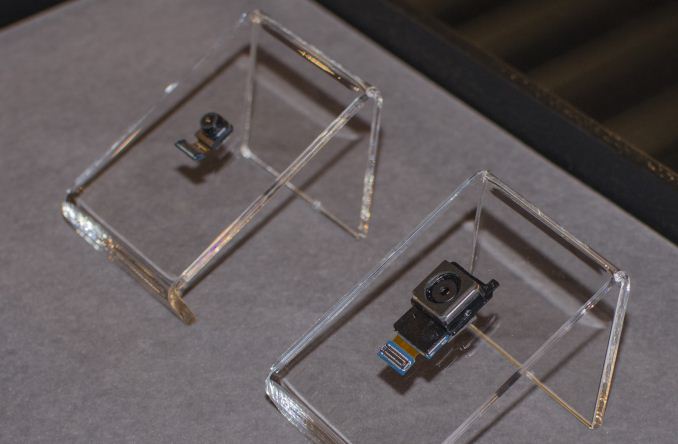
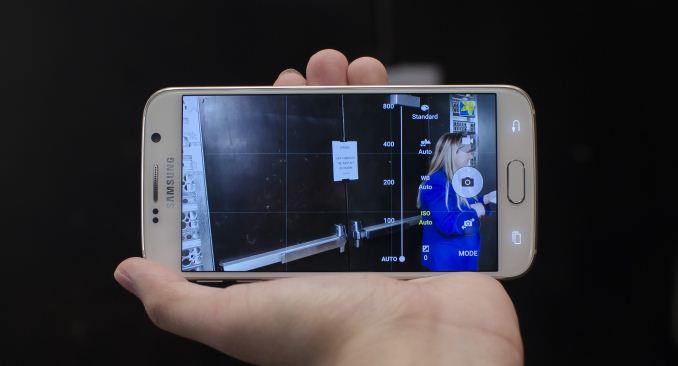
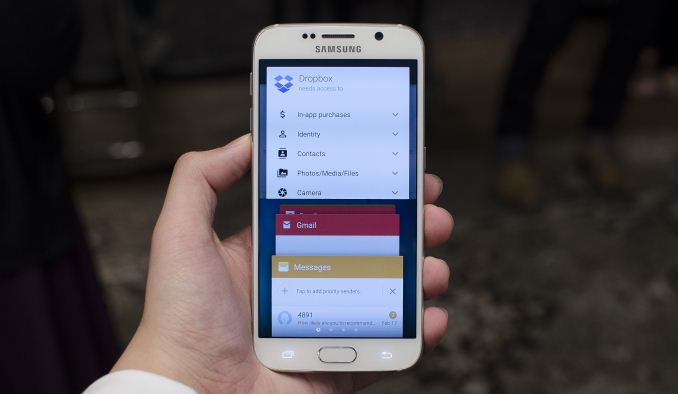
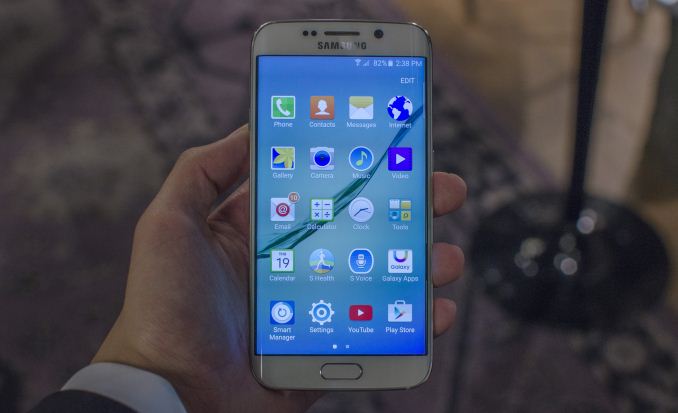
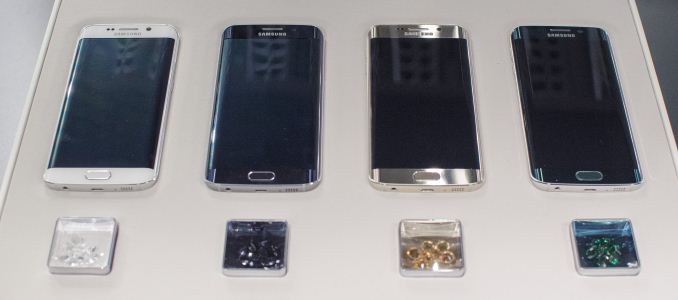
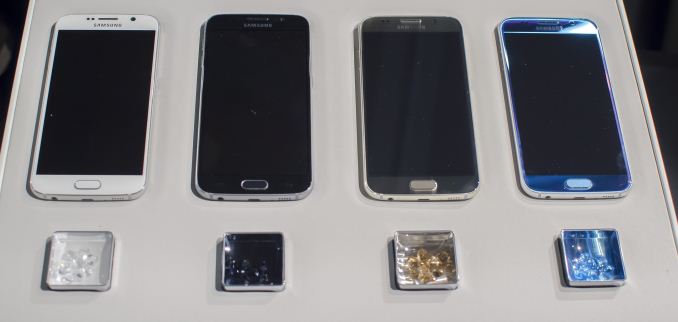














206 Comments
View All Comments
abufrejoval - Sunday, March 1, 2015 - link
The good thing about Samsung is that they typically offer choices: One single device cannot make everyone happy!So I am urgently hoping, that for the Note variant (which I'm typically using, because I like the bigger size), they will stick with plastic, removable batteries, potentially an SDcard slot, real USB 3 and ideally DP or HDMI on a real USB 3 docking station and full open source driver support for that external display.
For me these devices are PCs, that's personal computers with a big emphasis on *personal* meaning choice and full authority to the owner not the manufacturer.
At 64-Bit, >2GHz, 128GB of SSD class storage and 4-8GB of RAM, they certainly even qualify as a personal workstation, so please Samsung (or anyone) start offering such a device.
I don't need the S6 to be that device, I just hope Samsung sells so many of them to those who cherish "unibody" and glass over "survives minor mishaps and plain works" that they can also produce that personal workstation out of very much the same ingredients they have in stock.
I'm still missing the type of USB3 or "wireless PCIe" class connectivity to a charging docking pad which I keep dreaming about, which offers external screens, gigabit networking, CIFS/NFS/iSCSI or even USB 3 storage and potentially some noiseless cooling so the phablet form factor PC can clock to 3 GHz for a moment, when doing some really strenuous work.
There is probably very few phone applications out there, which can keep a 2GHz high performance quad core CPU with a matching GPU busy, except 3D games, but quite a few desktop ones, who might get a lot closer.
So since the hardware capabilities are finally there: Why not simply allow using these personal workstations as such by enabling a full Linux desktop inside a container launching and operating much like a game under Android with switching forth and back?
And while you're at it why not even more than one to segregate enterprise and private or other use cases? The tech, the hardware, hypervisor support even and the software are all there!
I want a personal workstation, that fits into my pocket, can be operated like a smartphone or phablet, but switches to full workstation mode, when put on a magic pad, which is really a docking station that doesn't require docking but uses ultra-short distance (millimeters) and ultra high bandwidth (gigabtes/sec) communications to display, storage and network.
It should "dock" in the office, in meeting rooms or lounges, at home wherever I sit down to do 5, 15 or 50 minutes of 'whatever' and connet to screens and networks in a manner appropriate to the context.
What's so difficult about that, that you haven't gotten it done for the last five years?
Get it done, please Samsung (or anyone!)!
sharath.naik - Sunday, March 1, 2015 - link
Am I wrong in seeing that the back is not all metal, if it is not all metal then what is the exact logic of dropping removable battery? And I did not see waterproofing so what was the point of losing external sdcard? All this achieved is1. Sub par look.
2 Smaller battery capacity
3. Lack of expandability.
4. Slower USB
Only positives
1. Better camera.
2. Better finger print reader.
.. I would have preferred Samsung just add the processor, camera, USB type c and finger print scanner to s5 and released it as s5+. This should not be difficult for Samsung as it already release multiple models, so why loose a large section of customers who stuck with galaxy line for the expandability.
Maxpower2727 - Monday, March 2, 2015 - link
The back is Gorilla Glass 4. Did you read the article? Or any of the other comments?sharath.naik - Tuesday, March 3, 2015 - link
Did i say the back is plastic or not glass? I donot think you read my comment.ruzveh - Sunday, March 1, 2015 - link
There are few doubts and improvements which samsung made and obv many areas where they dint cope or did badly..1. Smaller Battery - not good
2. Removable battery option - v bad
3. Why no HiFi DAC? - too bad.. i m still carying my mp3 player for this
4. DDR4 vs DDR3 - i think major improvement comes in the form of 128gb DDR4 and not DD3 option. And not because of some processor or graphics..
5. No FM - why?
6. No mention of IR Blaster? - is it there?
7. No mention of Water & Dust resistance - is it there?
8. Same old design language - m bored...
9. No microsd - no matter what this is a must
10. Sony camera - i thought s5 samsung inhouse camera is better , wish it cud hav OIS with it
factual - Sunday, March 1, 2015 - link
The history of modern smartphones:Apple invents the original iphone which revolutionizes the electronics industry and creates a whole new category of devices.
Samsung creates a cheap plastic copy of the iphone!
Samsung gains a significant amount of market share in the smartphone industry by offering a cheaper imitation of the iphone.
Apple introduces touch id, a fingerprint sensor that works extremely well and is very easy to use.
Samsung copies Apple by adding a fingerprint sensor to their smartphones! but it’s a swipe type sensor and doesn’t work well at all!
Apple introduces Apple Pay, a revolutionary mobile payment system that works in conjunction with touch id.
A lot of customers who had purchased Samsung phones for being more affordable, switch back to iphone in flocks after experiencing the horror that’s Samsung’s cheap design and laggy touchwiz bloatware! Samsung starts losing marketshare to Apple in the high-end of the market and its profits decline by over 60%!
Samsung resorts to copying material design of iphone 4 and shape of iphone 6 to try to offer a more premium looking copy of the iphone. it shamelessly copies the touch id and Apple Pay, calling it "Samsung Pay" !!!
The saga continues …
lilo777 - Monday, March 2, 2015 - link
I understand how the history might look this way from Cupertino but this is not how this all transpired in reality. The first smartphones were invented by NTT Docomo (Japan). Later Nokia, HTC, Blackberry and Samsung joined the trend and contributed a lot. Almost a decade later Apple released their first smartphone. The only big difference there was the use of a capacitive screen (although LG released first smart phone with capacitive screen a few weeks before Apple) Apple did not invent capacitive screen.All "cheap" Samsung" phones (speaking about Galaxy S series) were more expensive to make and used more expensive components than contemporary iPhones (iPhone's Bill Of Materials has always been the lowest among the flagship smart phones). First iPhones were plastic too.
It was not Apple that introduced fingerprint sensor. It was Motorola. Apple bought a company that made he sensors that worked "extremely well". Before that many companies used the same sensors.
Google introduced Google Wallet (available on Samsung phones). Apple copied it.
Samsung introduced a lot of things later copied by Apple. Here are a few examples: smart phone, 3G phone, LTE phone, phablet, barometer, sensor hub (to look different Apple called their differently - motion coprocessor but it's the same thing that was introduced first by Samsung), full HD screen, QHD screen (well Samsung might not have been the first among Android phone manufacturers but definitely way ahead of Apple which still does not have a QHD phone), Samsung popularized 8MP camera and Apple followed suit, fist phone with USB 3.0 etc. The list is too long. Apple rarely invents anything. They do popularize some things (thanks in part to rabid following) but that's about it.
factual - Monday, March 2, 2015 - link
My account of the history of the modern smartphone was precise and factual while your version mostly looks like fantasies of a fanboi!The first smartphone was actually introduced by IBM not NTT Docomo! but there is no doubt that the modern smartphone, i.e. the multitouch rectangular slab we call a smartphone today, was invented by Apple.
Anyone who understands technology knows that modern smartphones are not called "smartphones" because they have capacitive touch screens or round corners! The full featured mobile OS and its multi-touch UI, e.g. slide to unlock, pinch to zoom, double tap to zoom, rubber-band feature, swipe to scroll, mobile browser, concept of an app store, etc. are what constitute modern smartphones and they were invented through the original iphone and its subsequent iterations.
Apple introduced the first touch-based fingerprint scanner (the only kind that works well) in phones and Samsung is now copying it (business as usual). It's really ignorant to claim that the failure called Google Wallet has anything to do with Apple Pay! Apple Pay introduced local encrypted storage of credit card info, payment through secure tokenization and Touch-based sensors and that's what made it hugely successful and that's why Samsung is copying the exact same methods for "Samsung Pay" (they even shamelessly copied the name!!!)
The problem is that people who defend Samsung are usually ignorant and don't understand the underlying technology behind smartphones yet they think they know a lot and loudly comment about it! it's laughable to claim that chip technologies such as 3G, LTE, sensor hub, etc. that are developed by companies such as Qualcomm and Infineon and sold to device makers are somehow innovations by the device makers ... I mean you gotta be pretty clueless to claim that!
medi03 - Monday, March 2, 2015 - link
Pitch to zoom was there back in 90th, on multi-touch tablets,It is basically an obvious thing to do once you have a multi touch screen.
AnnonymousCoward - Sunday, March 1, 2015 - link
So....can anyone explain what the fundamental point of the Edge model is?